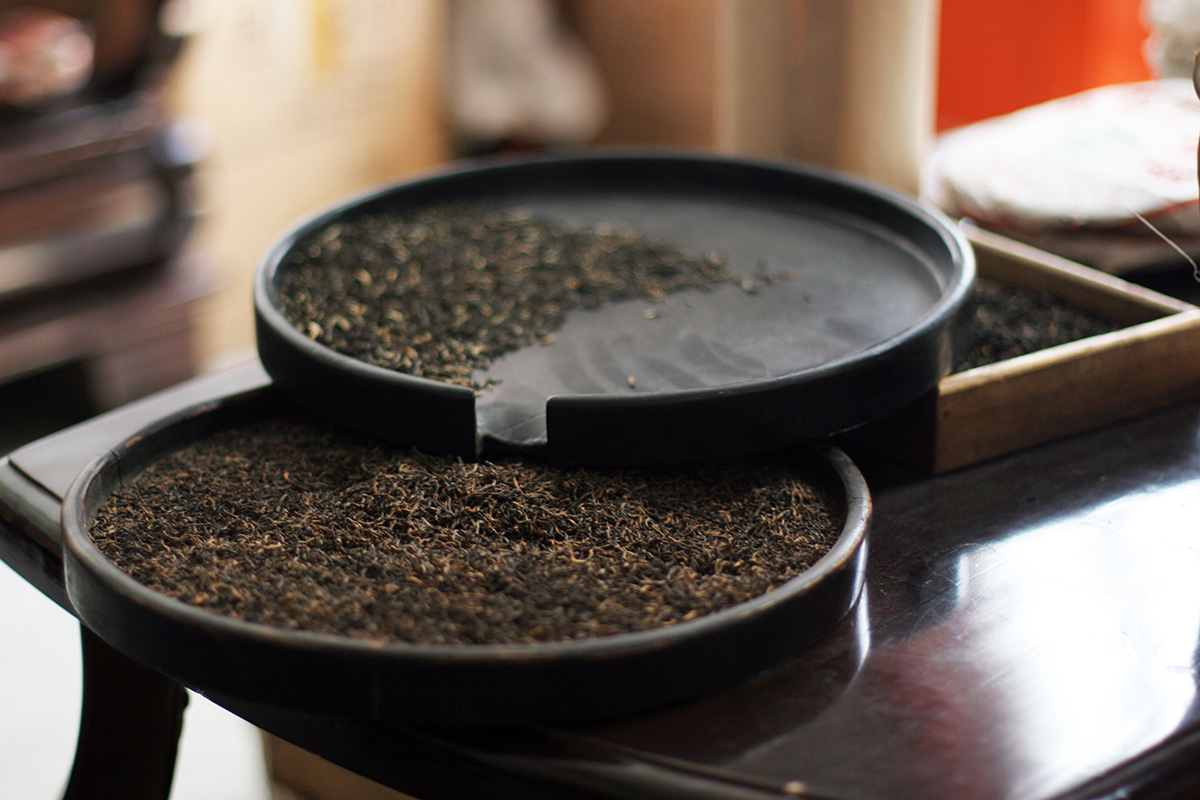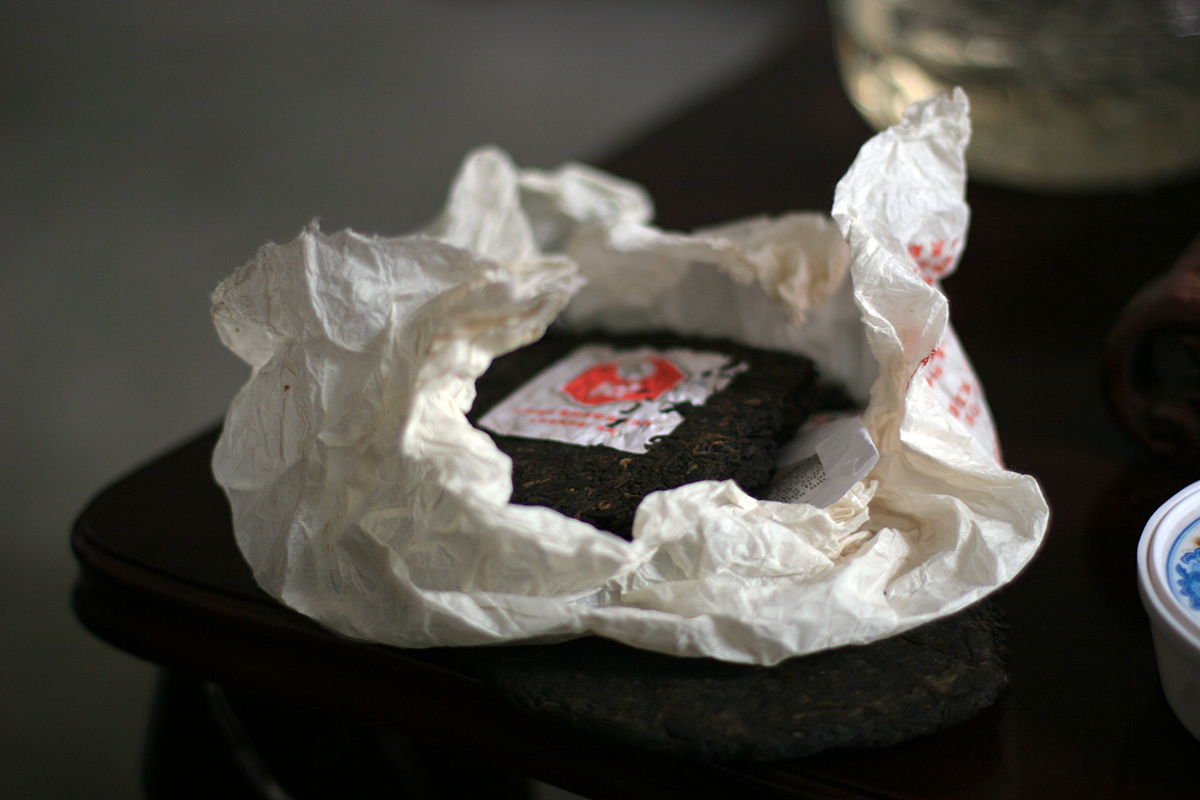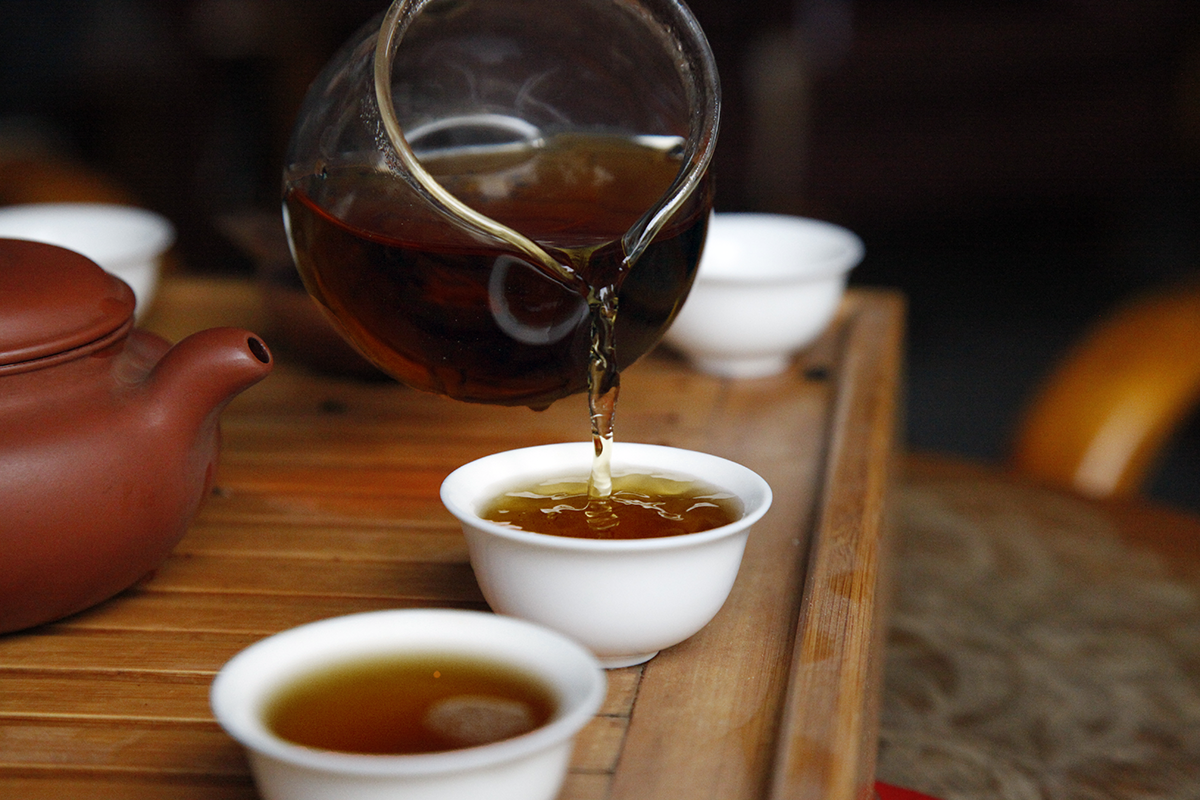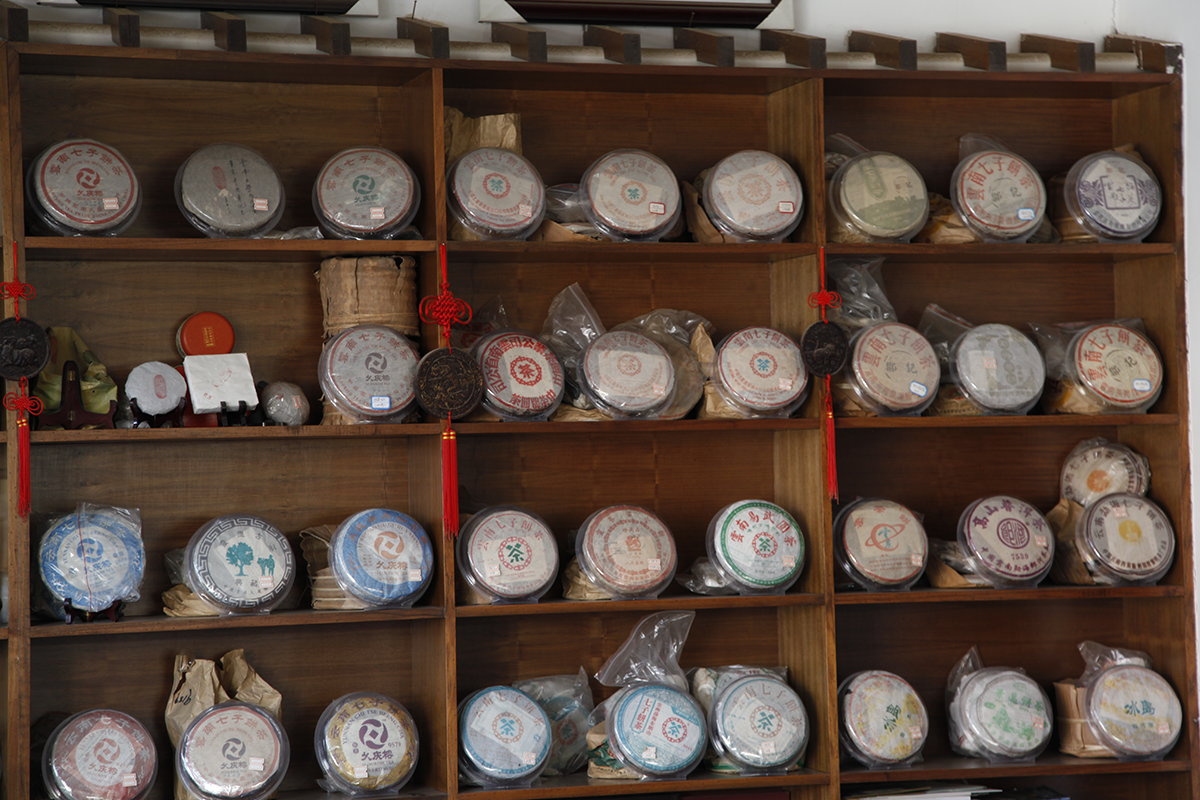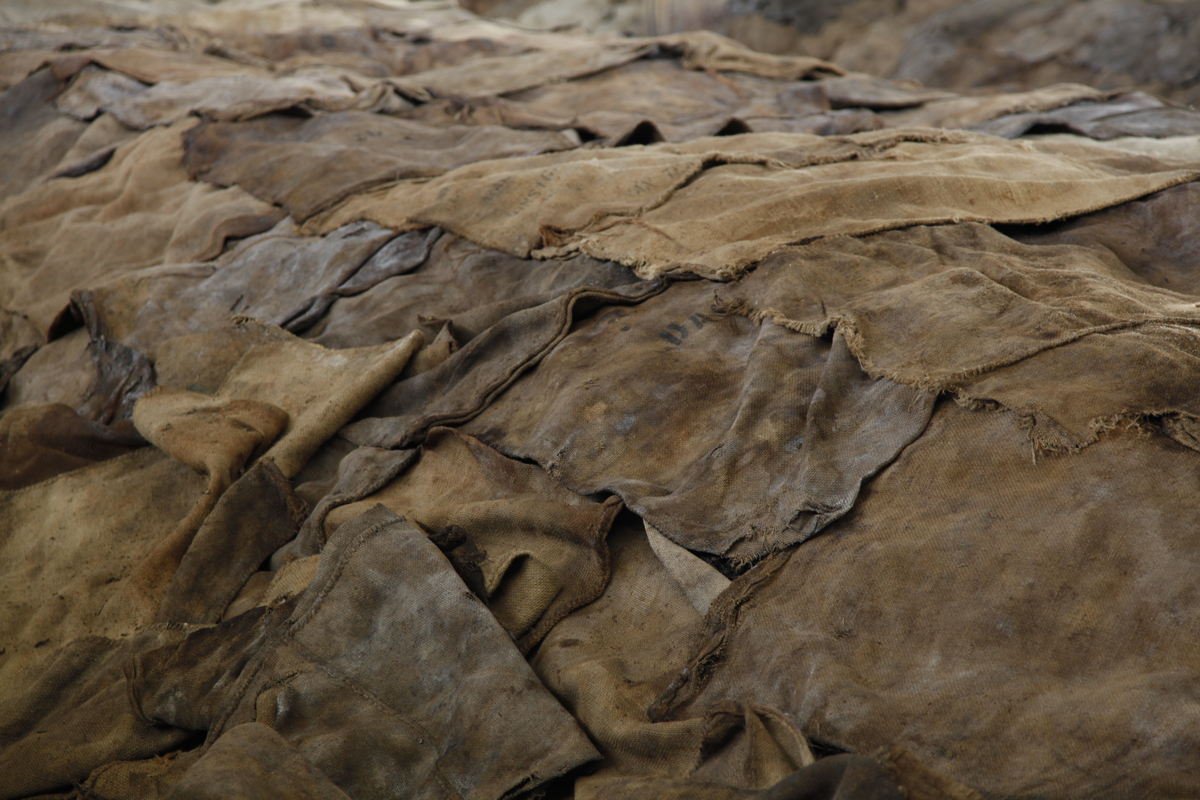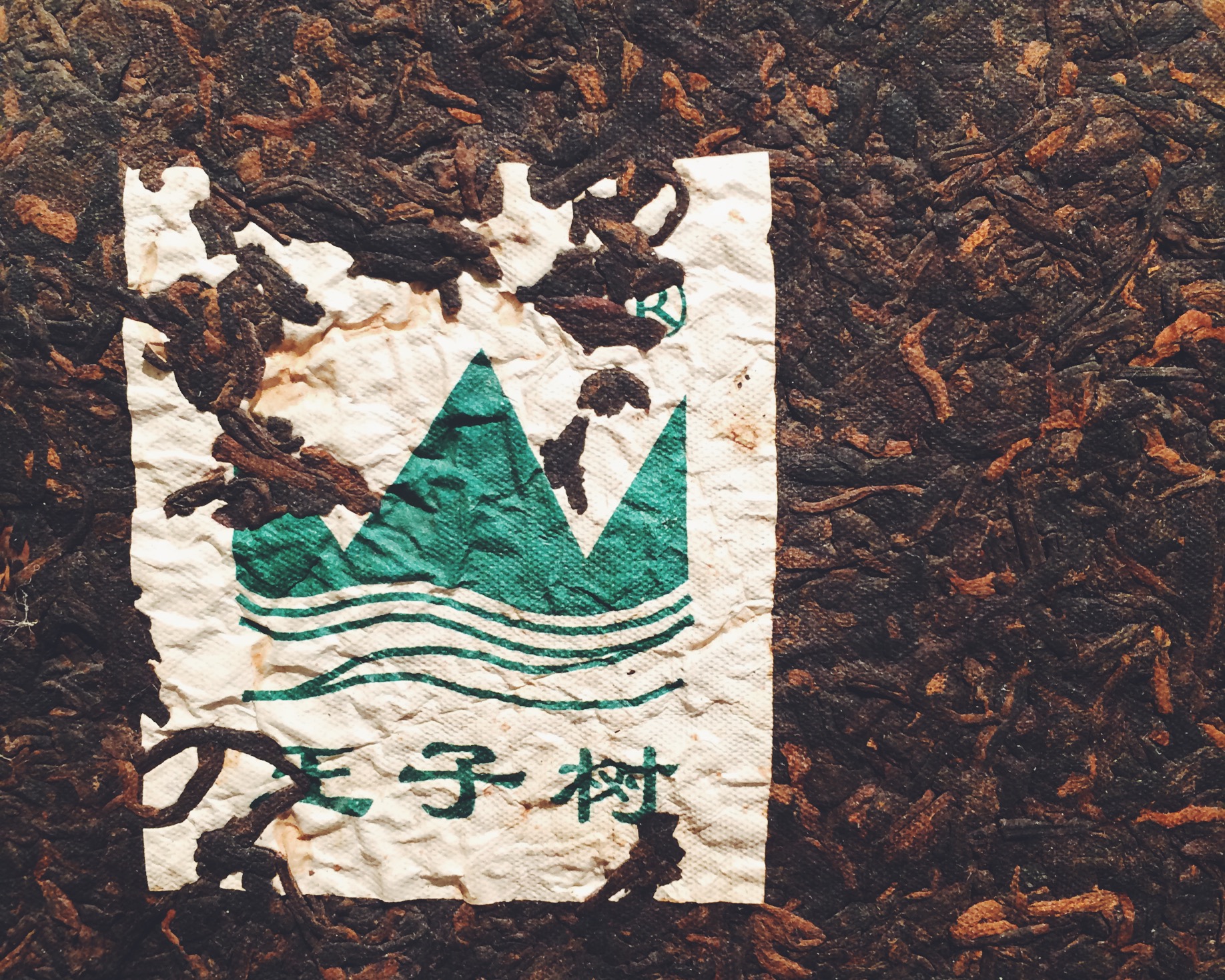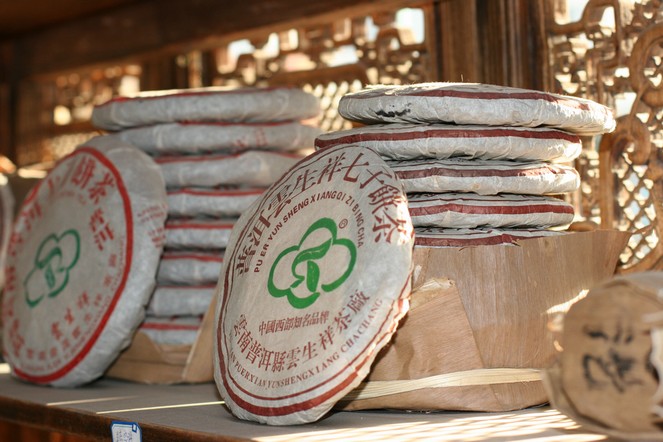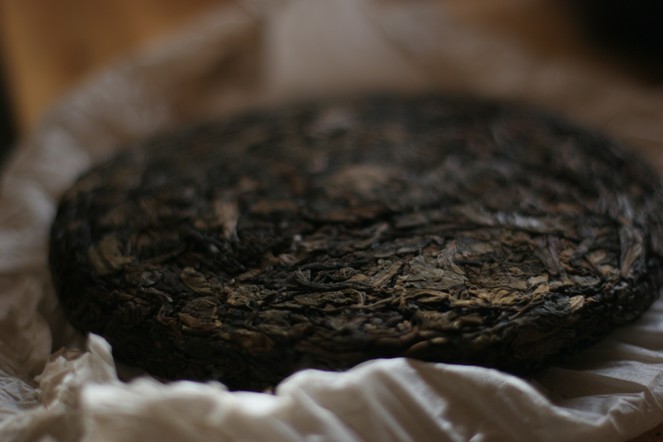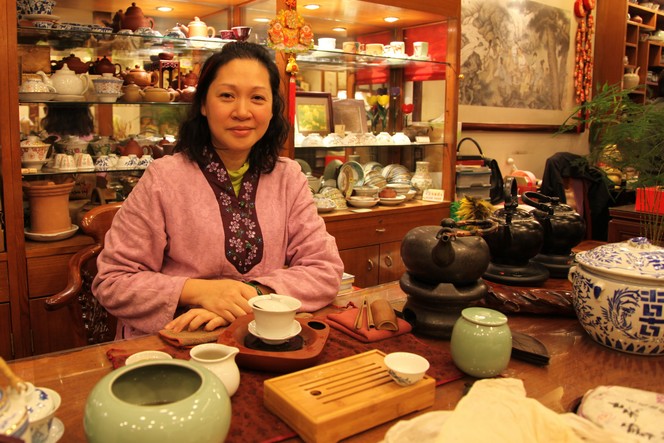You might think that the rules that define the colour of a tea are strict, but this isn’t always the case. Here in the Golden Triangle, the fashion is for Mao Cha, the tea that serves as a base for the various fermented teas known in this part of the world as Pu Erh. Some people let the Mao Cha wither overnight before fixing it with heat, rolling it, then leaving it in the sun for a day. Others, as soon as the leaves are picked, fire them in a wok for about ten minutes before rolling them by hand and leaving them to dry for five to six hours in the sun.
Pu erh
A tea for every season
So, it’s January, it’s cold outside, what tea should you be drinking? I recommend a dark tea (not to be confused with black tea), especially after that holiday period when the chances are you’ve overindulged. Because this deep, rich tea has been reputed for centuries for its digestive properties. Note, however, that this type of tea, also known as pu’er or pu-erh, undergoes post-fermentation. As such, expect your cup to develop aromas of moss, mushrooms, undergrowth, wet straw, along with notes of vanilla and liquorice as well as leather and other musky flavours. This incredible tea is simply perfect for this time of year and is good for us too. Let me know what you think!
A walk in the woods
During lockdown, it can be easy to let ourselves go a bit. We might exercise less and put on weight. Could this be a good time to turn to tea? According to traditional Chinese medicine, one of the many properties attributed to our beloved Camellia sinensis is fat-burning. This remarkable quality is particularly true of dark teas, called Pu Erhs, with their powerful notes of undergrowth and humus. If you can’t take a walk in the woods, you can at least enjoy all the associated aromas in your cup – alongside those other supposed benefits.
Teas shelter in place to develop powerful aromas
If there is one type of tea that could be described as being in “confinement”, which is our term for “lockdown” or “shelter in place” here in France, it is shade-grown teas. The best known of these is Pu Erh.
These teas generally go into confinement by being shaded for one to two months, although it can be longer. And when it comes to “deconfinement”, when you lift off the covers under which the harvested leaves have been gently fermenting, you are greeted with wonderful, powerful bouquets. In the cup, these teas develop magnificent aromas of undergrowth, cellars, mushrooms, sought-after animal notes that often evoke stables, and spices. Here’s to your “deconfinement”, whenever that may be.
The dark tea season
The winter in general and especially the festive season is an ideal opportunity to explore dark teas, which have been fermented. The best known come from Yunnan and are called Pu Erh. They are sold in loose-leaf form or compressed into cakes (see photo). Dark teas undergo a slow ageing process (sheng) or an accelerated one (shu). They are prepared in a teapot or a gaiwan (gong fu method). Pu Erhs give off powerful aromatic notes of wood, undergrowth, spices, damp earth and animal aromas. And if I add that these dark teas are popular in China to help ease the effects of overeating, you’ll understand why this is a good time of year to discover them!
Cooked Pu Erhs: an autumnal palette
What possible connection could there be between these tattered old cloths and tea? Simple: these thick cloths are used to cover piles of tea leaves, keeping the oxygen out. In the damp, dark environment, the tea will ferment. This is a crucial step in processing cooked pu erh teas. Every day, someone will check the temperature of the leaves, letting in a bit of air if they get too warm. They will also dampen the leaves several times over the forty days or so of ripening, covering them again immediately each time. In the cup, cooked pu erh teas develop notes of wood, undergrowth, caves, damp earth, straw, humus, leather, and liquorice, and it makes me smile to think that these cloths with their shades of brown express the same sense of autumn as the scent bouquet of the teas they cover.
Improving with age
Recently a blogger asked me what my favourite tea was. I couldn’t answer, as is the way every time I’m asked this question. I love so many different teas! How could I choose just one among the most remarkable teas? How could I choose one when they’re all so different? How to choose between a Japanese Ichibancha, for example, a Dan Cong, a Jukro, a Pu Erh Sheng, a Darjeeling AV2, an Oriental Beauty, a Taiping Hou Kui and an Anxi Tie Kuan Yin, to name just a few among my essential favourites? And that’s leaving aside all the other teas that can also be classed among the best in the world! Then there are the less well known ones, which I’m proud to have discovered in regions unknown by connoisseurs, such as Africa, for example.
No, I don’t want to answer that question. I don’t want to choose. Every tea has its moment, its day, time and surroundings. This morning, for example, a cold rainy day in Paris, the day of the American presidential elections, I warmed my body and soul with a Pu Erh Shu, a dark tea with earthy, animal notes; disturbing, powerful notes. A tea that is initially scary; a tea that smells of stables, leather, worm-eaten wood, cellars, moss, undergrowth, humus and decomposing plant material. A tea that nonetheless has a wonderful richness and is special because it improves with age. And that’s what I wish for the new American president: to improve with age.
Pu Erh, a fascinating group of teas
At this time of year, I particularly enjoy drinking Pu Erh after a meal. Firstly, it is said in China that this tea “dissolves fats” and helps prevent cholesterol. Secondly, I like its aroma of wet earth, rotting wood and damp straw; its smell of cowsheds, mushrooms and oak moss; its aroma of cellars, dry wood, liquorice, manes, wax and flint; its vegetal, fruity smell.
From one Pu Erh to another, the variety of olfactory notes is wide, another reason to try this fascinating group of teas, the only ones that undergo real fermentation. It is available loose-leaf or in a “cake”. It can be “raw” or “cooked”, depending on whether fermentation is done in the traditional manner or accelerated. It can also improve with age, like good wines.
Highly prized pu er cakes in China
2007 saw the start of a spectacular craze for pu er in China. In the space of a few weeks, this previously barely-known tea became the subject of frenzied speculation, and it took two or three years before prices came down again. Now it seems this same phenomenon is about to be repeated. Once again, the Chinese are queuing up to buy cakes of this tea, which is said to improve with age. As before, the cause is speculation. At the Canton Tea Fair, which has just taken place, we saw pu er cakes selling for over €1,000 each.
Yabo cha fang: a tea house in Hong Kong
When I arrive in Hong Kong I go straight to one of the tea houses; they’re such havens of peace. People go to them to buy old pu er; traditionally, the vendor sits opposite you and, after looking at you for a few moments, puts the water on to boil. They break off a piece of the tea cake, and you talk together about this and that, and about tea of course. You compare the different waters, because the same tea is infused several times over. From one tea to the next, one cake to the next, the minutes – sometimes the hours – pass by, interspersed with the sound of our little gulps: here, tea is drunk from tiny cups, like those used in the Gong Fu Cha.
A student of Yip Wai Man, Eliza Liu has one of these tea houses in the Mongkok district, and teaches her many devoted customers all about tea in an informal manner. Yabo Cha Fang is a friendly place with a special atmosphere, a mysterious charm, like Eliza’s smile which I have captured here, as she crosses her hands in the style of the Mona Lisa.

